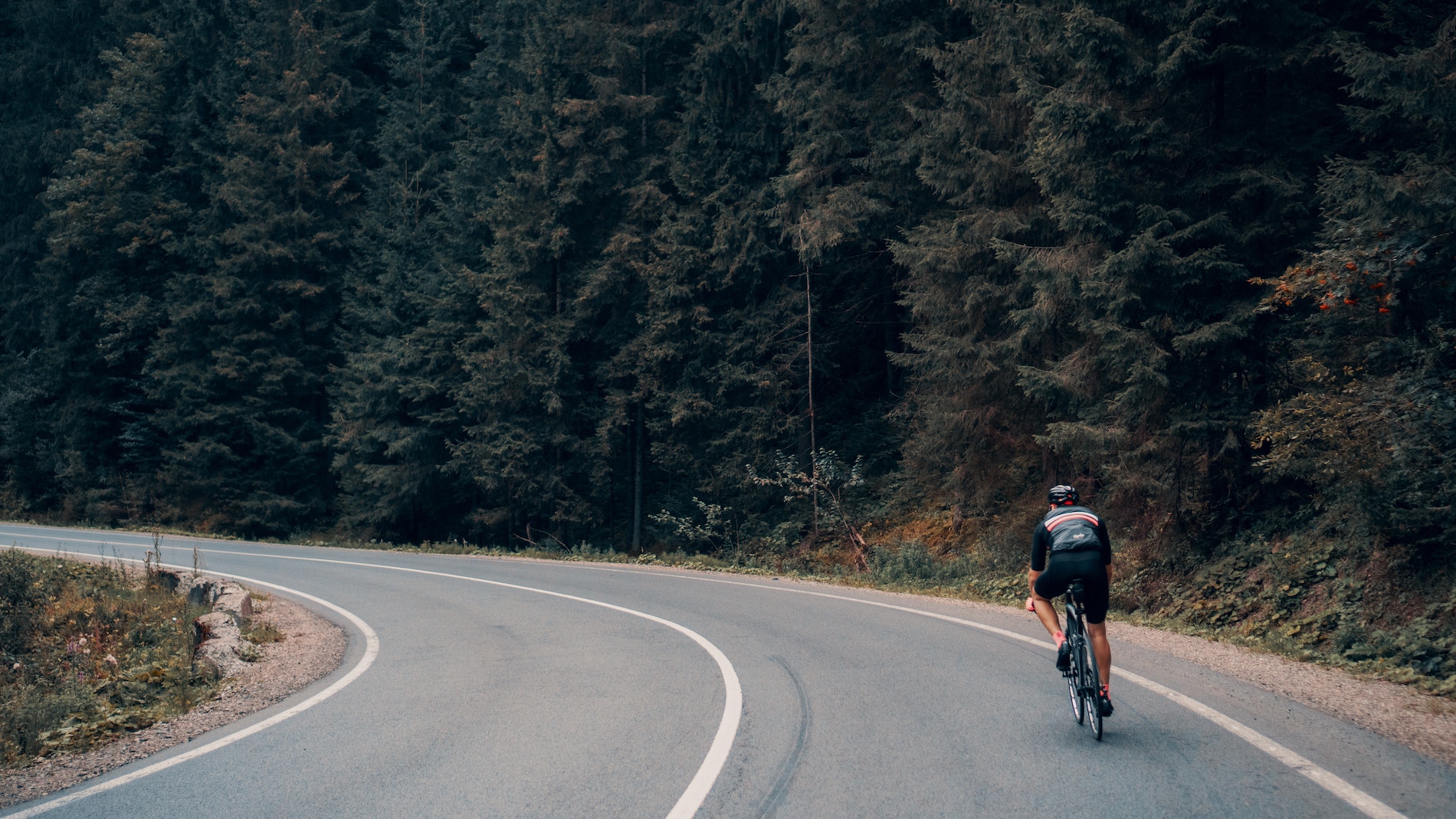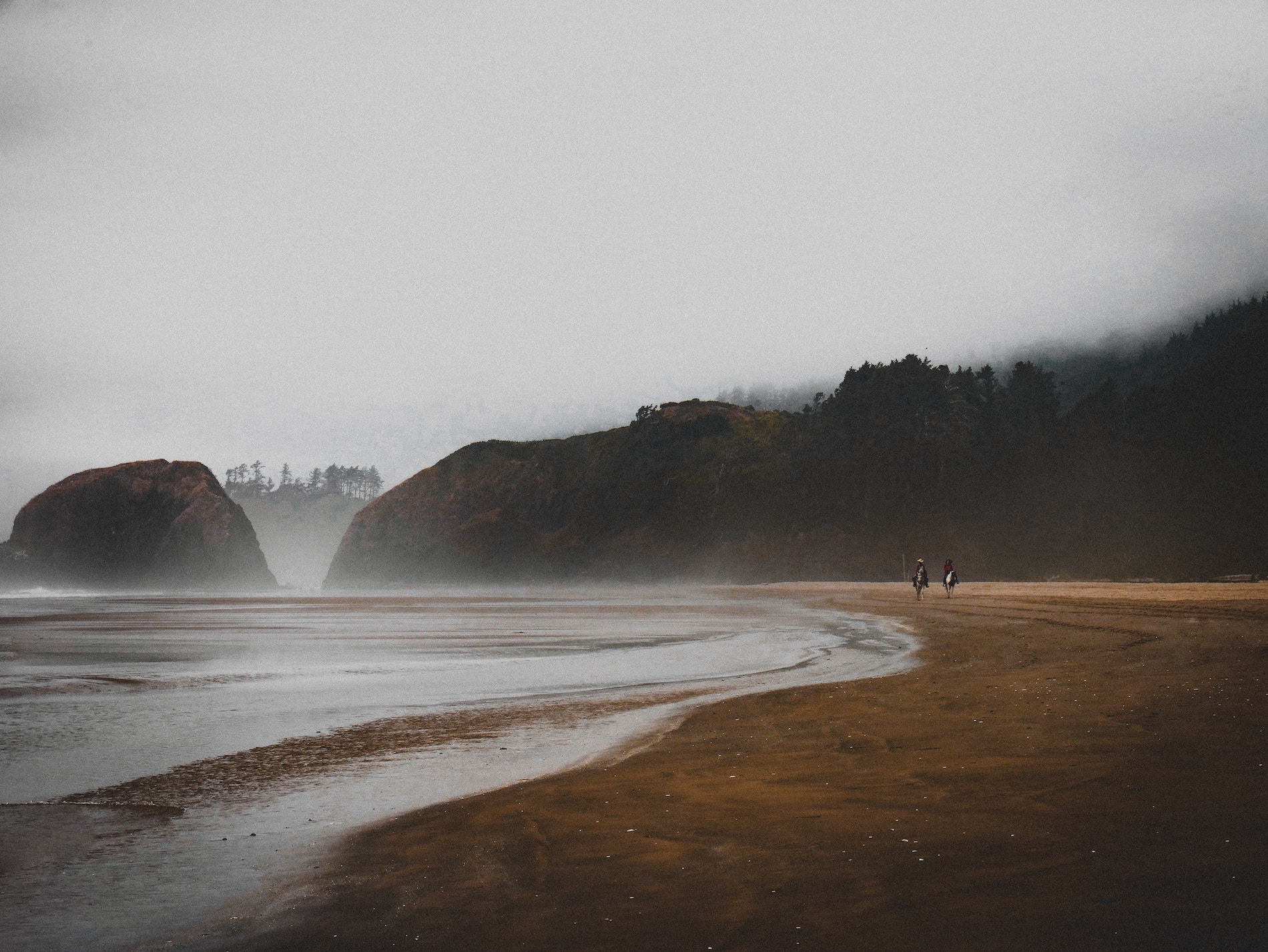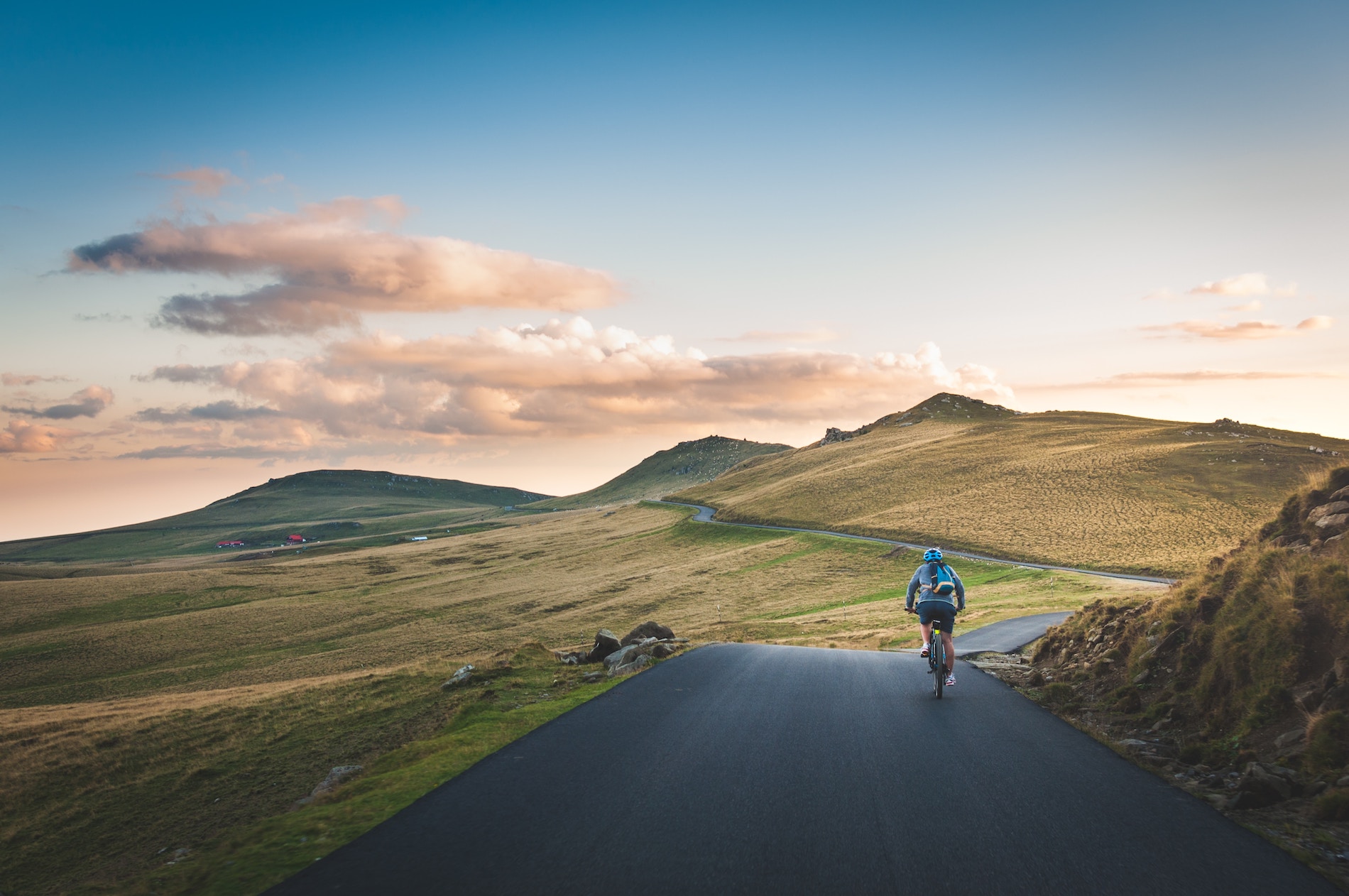The idea to tour the Pacific coast by bike came to me slowly, in pieces.
I wanted to challenge myself physically and mentally. I wanted to see the world with a minimal carbon footprint. Most of all, I wanted to travel alone, sure the experience would change me for the better.
Ideas percolated for a year or so before I came across the Bicycling the Pacific Coast guidebook by Vicky Spring and Tom Kirkendall. The route looked challenging but popular enough to be safe for solo travel. That settled it. I bought a secondhand bike with fifteen gears and two waterproof panniers, ready to hit the road as soon as I finished work at the end of October.
On November 7, 2016, I embarked on my first ever cycling trip. Objective: Seattle to San Diego.
Washington
 Victor Xok on Unsplash
Victor Xok on Unsplash
I caught the ferry from Seattle to Bremerton and zigzagged my way southwest towards Raymond, where I met the coast and joined the coastal highway. I hardly saw a soul as I passed through Washington. I camped in deserted state parks, or on small patches of flat ground in the National Forest beside the highway. One morning I awoke to the sound of shots being fired; I crossed my fingers and hoped that my little green tent was well out of range.
After a few days, the highway met the Willapa River and followed it west towards the ocean. The sun filtered through gaps in the thick purple clouds and flocks of geese called overhead as they migrated south. I savored the quiet serenity of the river valley, unaware that America’s political landscape was being rocked by the election of Donald Trump. While I immersed myself in the changing seasons, the rest of the country would be experiencing changes of much greater consequence.
Oregon
On my fourth day of riding, I crossed into Oregon via the Astoria Bridge. I had read about the risk of heavy traffic on the bridge, but that morning all was quiet. Relieved, I pedaled as quickly as I could across the six kilometer span. The Columbia River was immense and beautiful as it rushed out, far below me, to meet the sea.
 Antek Martens on Unsplash
Antek Martens on Unsplash
The ride along Oregon’s coastal highway was spectacular, all rolling dunes and wild ocean. Fierce winds whipped in off the water, cutting right through my windbreaker. I had been fortunate with the late fall weather so far, but I was anxious to make it further south before my luck ran out. I pushed on through several sweet coastal towns that must have been tourist heaven earlier in the year. Names like Surf Pines and Seaside evoked whimsical images of crowded, happy beaches. It was surreal to have the long expanses of deserted, wind-sculpted shoreline to myself.
One night, I biked until well after sunset, looking for a campsite that was listed in my guidebook but was nowhere to be found. As I wound up the narrow secondary road, a large vehicle passed me, slowed, then accelerated and passed me again.
We leapfrogged each other up the road for long enough to make the hairs on the back of my neck stand up. The vehicle passed me and turned a corner, but a moment later it appeared behind me again. I pedaled harder. Where on earth was that campsite? There was nowhere for me to pull off. Finally, when the mystery vehicle passed me and rounded a bend in the road, I hauled my bike into the forest, set up my tent in record speed, turned off my lights and curled up until I was sure no one was coming. It took a long time for my heart to stop pounding.
Midway down the Oregon coast, I started to feel like I had found my rhythm: rise with the sun, inhale a steaming bowl of oatmeal, pack up camp, pedal south.
In the evenings I heated ramen and hot chocolate on my camp stove and curled up with my guidebook in the fading evening light. Sunny days always gave me an extra burst of energy, and when it rained I learned to endure the soggy feeling of water seeping through the seams of my coat. As long as I remembered to tip the water out of my boots every so often and didn’t stop for long enough to get chilled, I could usually make it to the next state park campsite without too much discomfort. In the evenings I would wring out my sodden cycling clothes and hang them to drip dry in the state park bathrooms. The feeling of changing into my dry, fleecy campsite outfit was pure bliss, surpassed only by the occasional joy of coming across a laundromat.
 David Marcu on Unsplash
David Marcu on Unsplash
Just south of Florence I met a group of five young cyclists from Vancouver.
I was giddy with excitement at meeting other cyclists on the road (they were the first), and in the end, I benefitted hugely from our brief chat. They introduced me to a website called Warm Showers; members on the site could list themselves as either touring cyclists or hosts, to connect road-weary riders with people who could give them a free place to spend the night. I was amazed at the sheer volume of people who were willing to open their homes to strangers, especially of the dirty, smelly, cycling variety. The site became one of my most valuable tools. Traveling alone made it easy to find hosts who had space for me, and meeting so many interesting people added a rich new dimension to the trip.
California
A few days later I met another cyclist, a young British doctor. We continued on together down through California’s otherworldly giant redwoods. Our few days together were memorable. We raced down the highway, frequently stopping under large trees for shelter when the rain came down hard enough. We inhaled deep breaths of the crisp, loamy air and pedaled slowly through the hushed stillness of the forest, awestruck.
In Crescent City we stayed in a church, listed on Warm Showers, that was a popular destination for any cyclists passing through. We reunited with my five friends from Vancouver and swapped stories with a French Canadian couple who were cycling from Alaska to Patagonia.
As we cooked dinner together, a happy, chaotic jumble in the unfamiliar church kitchen, the group felt like family. I fell asleep on that church floor feeling full to the brim with gratitude.
My British friend and I parted ways in Garberville, where I had arranged to work on a community farm for a week in exchange for a dry place to sleep. The farm manager installed me in a garden shed that smelled strongly of marijuana; it was heaven to unfold my sleeping mat and bag for a whole week and to hang my damp gear for long enough to dry properly.
The fields were too waterlogged to do much work, so I mostly curled up in my shed and read, or cooked and played music with two other farm volunteers who were there for the month. I spent Thanksgiving with the farm manager and his young family before reluctantly moving on.
I stayed on several other farms and homesteads in northern California, thankful for every opportunity to explore the towns along the coast in more depth. Between each stop the narrow highway was my private paradise, snaking its way alongside the crashing surf and windswept chaparral. Groves of tamarack, cedar, cypress, and birch made way for fragrant eucalyptus trees, and finally rugged golden grassland. I camped in state parks tucked into the coastal forest; along expansive shorelines where the wind and waves roared in with tremendous power.
One evening, as I rushed to make it to a campground in the fading light, a couple stopped to offer me a ride. Experiences like that were common; as a woman traveling alone, I seemed to invite conversation and offers of help.
People would stop me in the street to ask whether I needed anything, or give me a chocolate bar for the road. One particularly rainy day, one lovely couple gave me some money for a motel. I was blown away by the kindness of everyone I met, and the serendipitous way that help seemed to find me when I needed it.
On New Year’s Eve, I found myself alone at a beachside campground.
Feeling bereft and homesick, I wandered down to the water. The moon was a golden sliver in the west and the air was still. The first stars of the evening were reflected in the watery shoreline. Staring out at the ocean, calm as glass, I felt like I was floating into outer space. I was in Seaside, California, and I had been on the road for just under two months. I fell asleep to the sound of fireworks as the rest of the country rang in the New Year, feeling disconnected from it all.
 Matthew Hami on Unsplash
Matthew Hami on Unsplash
The long hills and hairpin turns of the highway through Big Sur were a welcome challenge. After a few long days of biking into a stiff headwind, my arms and legs were shaking with fatigue. At one point, the wind gusted so strongly that it stopped me dead in my tracks at the bottom of a long, steep descent. A few months after I completed that section of highway, it would be washed out by the largest mudslide in recorded state history, but when I was there the weather limited itself to a dull drizzle.
The days rolled by. California felt inconceivably enormous.
The change in energy as I ventured into southern California was palpable, like a faint hum in the air. Palm trees, pines, and eucalyptus lined the highway, and the beach towns started to feel downright lively.
Pismo Beach and Oceano were wonderfully tacky – I watched tanned tourists line up for ice cream in colorful storefronts, and 4x4s wheel about on the dunes. The campsite in Oceano felt crowded and unsafe, so I headed out of town and pitched my tent in a slim swathe of eucalyptus trees sandwiched between the highway and a set of train tracks. The passing trains shook my tent, and when I woke the next morning and stepped outside, several farm workers were staring at me from across the tracks. I gave them a small wave as I pedaled away and chuckled at what I must have looked like: a skinny, dusty girl emerging from the undergrowth with an even dustier bicycle.
I loved feeling the different influences that shaped Southern California.
The influence of Spanish colonizers was evident in the missions and ranchos along the highway. Many place names, such as Nipomo and Lompoc, had their roots in the language of the indigenous Chumash people. One day I passed through Solvang, a small city founded by Danish immigrants in the early twentieth century. The town was complete with Danish architecture, bakeries, and folk art – I felt as though I had traveled back in time.
My trip to Solvang caused me to deviate from the coastal route and follow a narrow inland highway up over San Marcos Pass. The road lacked a proper shoulder and the high volume of traffic surprised me. After several angry honks from passersby, I hauled my bike and gear into the forest beside the highway and decided to wait until the following morning to make a break for it. The road was much quieter at daybreak the next day, and despite some residual anxiety, I had a pleasant ride. I climbed up and up for hours out of the San Ynez Valley and was rewarded with an exhilarating half-hour downhill ride towards Santa Barbara and the ocean.
The road to Sand Diego seemed to fly by under my tires. I skipped the busiest section of it, around Los Angeles, by taking a train from Carpinteria to Riverside to visit an old friend and wait out a spell of stormy weather. South of Riverside, my ride seemed to take place mainly on separated bike paths or dedicated bike lanes; the days of having the highway to myself were well behind me now.
My last day of riding was glorious.
From La Jolla, I wound my way towards a multi-use path along the water, pleasantly busy with people running, cycling, or sipping coffee on waterfront patios. Beachfront properties were a mix of Spanish-inspired adobe, rustic wooden buildings with shingled siding, modern structures with imposing windows, and colorful cafes.
I meandered through San Diego and slowly made my way to my host for the night, a cycle touring aficionado who had ridden the Pacific Coast route in both directions.
I had reached the end of the road and I didn’t know how to feel. I thought of all the people who had invited me into their homes over the past months. What would my trip have been like, had I not been met with so much generosity and support along the way? Thinking back on the journey, years later, what would I remember the most? Would it be the incessant rain, or the many unexpected places I had found shelter, or both?
I had started the trip seeking to test myself mentally and physically, and to learn to be more capable on my own. In hauling myself and my bike some 2300 kilometers down the Pacific coast, I had experienced challenging moments every day. But I surprised myself: none of it ever felt as hard as I’d expected.
The hills were hard, but I gained some new muscles. The exposure to the elements was hard, but the rain was just rain; I got used to it. Many days felt lonely, but everyone I met was so supportive that I never truly felt alone. I had quickly learned to see my solitude as a gift: it made me so much more open to the small, beautiful details of each day. Every interaction was more interesting, every landscape more vivid. I had infinitely more gratitude for the moments that brought comfort and solace in the face of challenges.
Reflecting on how far I was from where I’d started, I didn’t feel as though I had reached my limit yet.
I closed my eyes and tried to prepare myself for the next leg of the journey: in the morning I would take a tram to the border, walk across, and continue into Mexico.